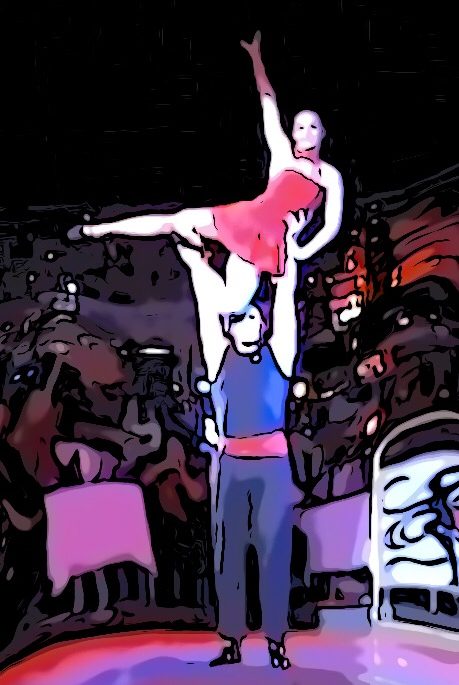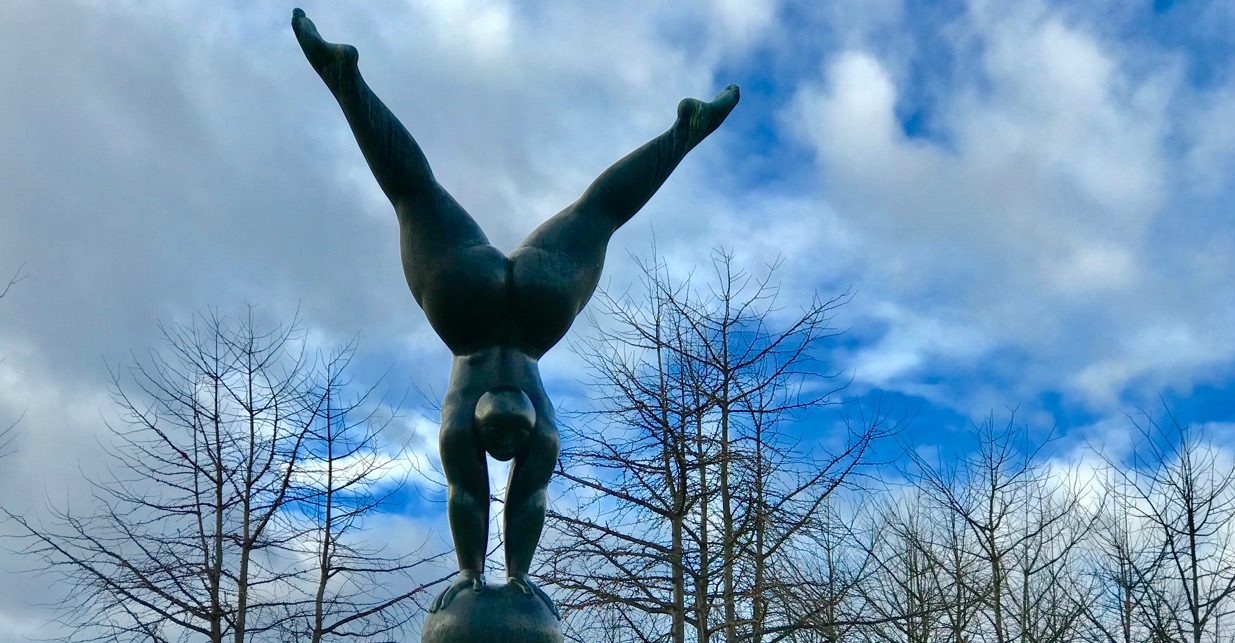For the balance of this position, the shoulder is significantly involved. The shoulder is a floating joint, i.e. she has no firm connection with the trunk skeleton. There are exactly 2 positions wherein the shoulder is fixed:
1) pull the arms all the way to the hips (until the collarbone is horizontal) or
2) pull your shoulders to your ears (until no finger fits between them).
Both positions are not natural and require a lot of training! A ballet dancer trains for it daily for years.
Amazingly, a good body control while standing is no guarantee for just as good actions upside down. The muscle coordination has to be re-learned. In particular, the shoulder causes enormous problems, since we are used to standing up to keeping the neck long and pulling shoulders down (position 1). Whereas in the handstand the shoulder should stay as close to the ears as possible (position 2) and in comparison act like our pelvic floor muscle similar while standing.
Even trained ballet dancers often lose while head-over their form and orientation!
Deutsch

